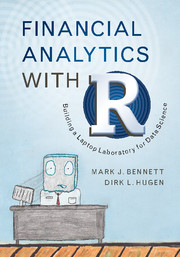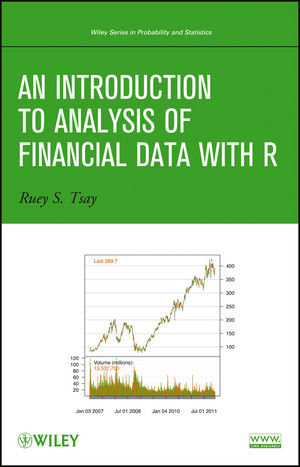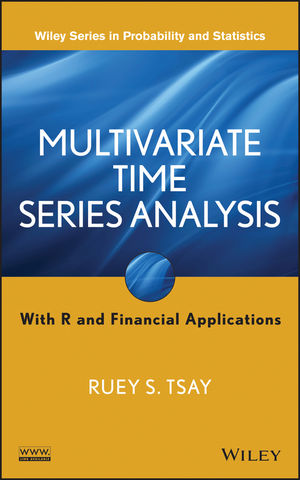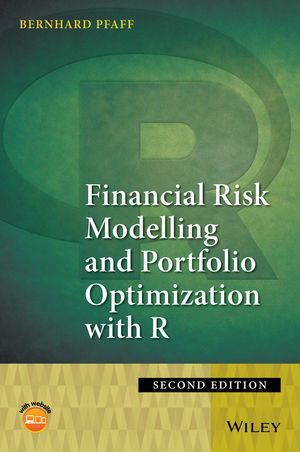This post is part of a series of "learning everything with R: An R book list". You can clink on this link to see other relevant posts.
As R is more and more popular in the industry as well as in the academics for analyzing financial data. For people unfamiliar with R, this post suggests some books for learning financial data analysis using R. From our teaching and learning R experience, the fast way to learn R is to start with the topics you have been familiar with. Thus, the book list below suits people with some background in finance but are not R user. These books below will provide useful guidance for your R learning journey. Try to read and compare these books to find what really fits you.
Fundamental theories: Time series modeling with R
| Book Cover | Extracted summary |
|---|---|
 | Book Title: Time Series Analysis and Its Applications With R Examples Author: Shumway, Robert H., Stoffer, David S. This book presents a balanced and comprehensive treatment of both time and frequency domain methods with accompanying theory. Theory and methodology are separated to allow presentations on different levels. |
 | Book Title: Applied Time Series Analysis with R Author: Wayne A. Woodward, Henry L. Gray, Alan C. Elliott This book includes examples across a variety of fields, develops theory, and provides an R-based software package to aid in addressing time series problems in a broad spectrum of fields. |
 | Book Title: Analyzing Financial Data and Implementing Financial Models Using R Author: Clifford Ang This book teaches students how to use R to analyze financial data and implement financial models from start (e.g., obtaining data) to finish (e.g., generating output expected for a particular analysis) using real-world data |
 | Book Title: Practical Time Series Forecasting with R: A Hands-On Guide Author: Galit Shmueli and Kenneth C. Lichtendahl This book providea an applied approach to time-series forecasting which is an essential component of predictive analytics. This book also introduces popular forecasting methods and approaches used in a variety of business applications. |
 | Book Title: Modeling Financial Time Series with S-PLUS® Author: Eric Zivot and Jiahui Wang This book represents an integration of theory, methods , and examples using the S-PLUS statistical modeling language and the S+FinMetrics module to facilitate the practice of financial econometrics. This is the first book to show the power of S-PLUS for the analysis of time series data. |
 | Book Title: Time Series Analysis With Applications in R Author: Jonathan D.Cryer and Kung-Sik Chan This book presents an accessible approach to understanding time series models and their applications. The new edition devotes two chapters to the frequency domain and three to time series regression models, models for heteroscedasticity, and threshold models. |
 | Book Title: Statistics and Data Analysis for Financial Engineering Author: David Ruppert and David S. Matteson This book contains an ideal blend of innovative research and practical applications, tackles relevant investor problems, and provides a multi-disciplined approach, solving problems from both fundamental and non-traditional methods |
 | Book Title: Financial Analytics with R Author: David Ruppert and David S. Matteson This book give examples using financial markets and economic data to illustrate important concepts. R Labs with real-data exercises give students practice in data analysis. |
 | Book Title: R in Finance and Economics Author: Abhay Kumar Singh and David E Allen This book provides an introduction to the statistical software R and its application with an empirical approach in finance and economics. It is specifically targeted towards undergraduate and graduate students. It provides beginner-level introduction to R using RStudio and reproducible research examples. |
 | Book Title: An Introduction to Analysis of Financial Data with R Author: Ruey S. Tsay This book explores basic concepts of visualization of financial data. Through a fundamental balance between theory and applications, the book supplies readers with an accessible approach to financial econometric models and their applications to real-world empirical research. |
 | Book Title: Statistical Analysis of Financial Data in R Author: René Carmona Although there are many books on mathematical finance, few deal with the statistical aspects of modern data analysis as applied to financial problems. This textbook fills this gap by addressing some of the most challenging issues facing financial engineers. It shows how modern statistical techniques can be used in the solutions of concrete financial problems. |
 | Book Title: Multivariate Time Series Analysis Author: Ruey S. Tsay This book is the much anticipated sequel coming from one of the most influential and prominent experts on the topic of time series. Through a fundamental balance of theory and methodology, the book supplies readers with a comprehensible approach to financial econometric models and their applications to real-world empirical research. |
 | Book Title: Computational Finance Author: Argimiro Arratia This book teaches you how to use the statistical tools and methods available in the free software R, for processing and analyzing real financial data |
 | Book Title: Forecasting: principles and practice Author: Rob J Hyndman and George Athanasopoulos This textbook provides a comprehensive introduction to forecasting methods and presents enough information about each method for readers to use them sensibly. |
Practice: Trading, option pricing, and portforlio optimization with R
| Book Cover | Extracted summary |
|---|---|
 | Book Title: Automated Trading with R Quantitative Research and Platform Development Author: Christopher Conlan This book has full source code and step-by-step explanation for plug-and-play trading platform. Platform can be used in brokerage-level simulation or production before reading every chapter |
 | Book Title: Option Pricing and Estimation of Financial Models with R Author: Stefano M. Iacus This book presents inference and simulation of stochastic process in the field of model calibration for financial times series modelled by continuous time processes and numerical option pricing. It also introduces the bases of probability theory and goes on to explain how to model financial times series with continuous models. |
 | Book Title: Quantitative Trading with R Author: Georgakopoulos, H. This book offers a winning strategy for devising expertly-crafted and workable trading models using the R open source programming language, providing readers with a step-by-step approach to understanding complex quantitative finance problems and building functional computer code. |
 | Book Title: Mastering R for Quantitative Finance Author: Edina Berlinger et al. This book is organized as a step-by-step practical guide to using R. Starting with time series analysis, you will also learn how to forecast the volume for VWAP Trading. Among other topics, the book covers FX derivatives, interest rate derivatives, and optimal hedging. |
 | Book Title: Numerical Methods and Optimization in Finance Author: Manfred Gilli et al. This book describes computational finance tools. It covers fundamental numerical analysis and computational techniques, such as option pricing, and gives special attention to simulation and optimization. |
 | Book Title: Tools for Computational Finance Author: Seydel, Rüdiger This book covers on an introductory level the very important issue of computational aspects of derivative pricing. |
 | Book Title: Financial Risk Forecasting Author: Jon Danielsson This book is a complete introduction to practical quantitative risk management, with a focus on market risk. It brings together the three key disciplines of finance, statistics and modeling (programming) |
 | Book Title: Financial Risk Modelling and Portfolio Optimization with R, 2nd Edition Author: Bernhard Pfaff This book is a great collection of many R finance package introductions. It will be especially useful for the experienced financial data analysts. It also provides a plethora of R code examples |
Notice that the information above is directly collected from the publisher website and we just summarize it for you. Further details about these books can be assessed by clicking the links to the book publisher. If you would like to get a quick review of financial data analysis using R, see our recent presentation here.
Finally, since more and more books are published these years to address using R in financial data analysis, the book list above might not be comprehensive. You are very welcome to leave the comments below to tell us what we missed. We will try to add them to the list ASAP!
Page last updated on 25 Nov. 2016.




